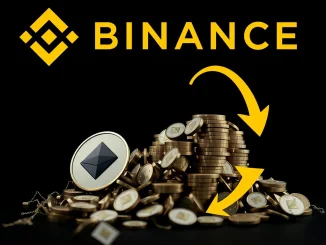
The cryptocurrency market, known for its rapid swings, recently saw a significant event involving the memecoin known as TST. Reports indicate a dramatic TST price drop, leaving many in the community watching closely. This sudden decline highlights the inherent risks tied to highly speculative digital assets.
What Triggered the Sudden TST Price Drop?
According to a report from Wu Blockchain via X (formerly Twitter), the Test (TST) memecoin experienced a sharp decline, plummeting by a significant 40%. The reported price point reached $0.03456 on both the Binance spot and futures markets. This kind of rapid percentage drop is a stark reminder of how quickly value can erode in the crypto space, particularly for assets driven primarily by sentiment rather than fundamental utility.
Here’s a quick breakdown of the reported event:
- Asset: Test (TST) memecoin
- Reported Drop: 40%
- Reported Price Low: $0.03456
- Affected Markets: Binance spot and futures
- Source: Wu Blockchain (via X)
Comparing the Numbers: Binance TST vs. Global Data
While the immediate drop reported on Binance TST markets was 40%, data from CoinMarketCap provided a slightly different perspective on the broader 24-hour performance. According to CoinMarketCap, TST was trading around $0.04087 at the time of reporting, showing a 24-hour decrease of 30.32%.
Why the difference between the reported 40% immediate drop on Binance and the 30.32% 24-hour change on CoinMarketCap? Market data can vary slightly between exchanges due to differences in trading volume, liquidity, and the specific timeframes being measured. The 40% figure likely represents a peak-to-trough fall within a very short period on Binance, while the 30.32% is the net change over a full day across various platforms tracked by CoinMarketCap. Regardless of the exact percentage, both figures point to substantial losses.
Understanding the Memecoin Crash Phenomenon
This event serves as a classic example of a potential memecoin crash. Memecoins are digital currencies often created as a joke or based on internet memes, lacking strong underlying technology or real-world use cases. Their value is heavily influenced by social media trends, community hype, and speculation.
Factors that can contribute to a sudden memecoin crash include:
- Whale Activity: Large holders (whales) selling off significant portions of their holdings, overwhelming buy orders.
- Loss of Hype: Decreased social media interest or negative sentiment spreading quickly.
- Market Corrections: Broader downturns in the crypto market affecting all assets, especially riskier ones.
- Lack of Fundamentals: With no intrinsic value, there’s no floor price based on utility or revenue, making drops potentially limitless.
Navigating Crypto Market Volatility
The TST incident underscores the high degree of crypto market volatility. While all cryptocurrencies can experience price swings, memecoins are often at the extreme end of this spectrum. For participants in this market, understanding and preparing for volatility is crucial.
Consider these points when dealing with volatile assets:
- Risk is High: You could lose a significant portion, or all, of your investment very quickly.
- Emotion Plays a Role: Panic selling during a drop can exacerbate losses.
- Information Spreads Fast: News (like the Wu Blockchain report) and rumors can trigger rapid price movements.
Lessons from a Crypto Price Drop
Every significant crypto price drop offers lessons for investors and traders. The TST situation highlights the speculative nature of memecoins and the potential for rapid, large-scale losses.
Key takeaways include:
Challenges:
- Predicting the top or bottom of a memecoin’s price.
- Distinguishing between genuine community growth and pure speculation.
- Managing emotional responses during sharp market movements.
Actionable Insights:
- Do your own research (DYOR) thoroughly before investing in any asset, especially memecoins. Understand what drives its value (or lack thereof).
- Only invest what you can afford to lose. Given the high risk, treat memecoin investments as highly speculative bets.
- Consider risk management tools like stop-loss orders to limit potential losses if the price moves against you.
- Diversify your portfolio; don’t put all your funds into one highly volatile asset.
Summary: The Sharp Reality of TST’s Fall
The sudden 40% drop in the TST price on Binance, as reported by Wu Blockchain, serves as a stark reminder of the extreme volatility and risks associated with memecoins. While the exact figures vary slightly depending on the data source (Binance vs. CoinMarketCap), the core event remains the same: a significant crypto price drop impacting holders of TST. This memecoin crash underscores the importance of caution and due diligence in the face of high crypto market volatility, especially when engaging with assets like Binance TST that are driven by hype rather than fundamentals.



